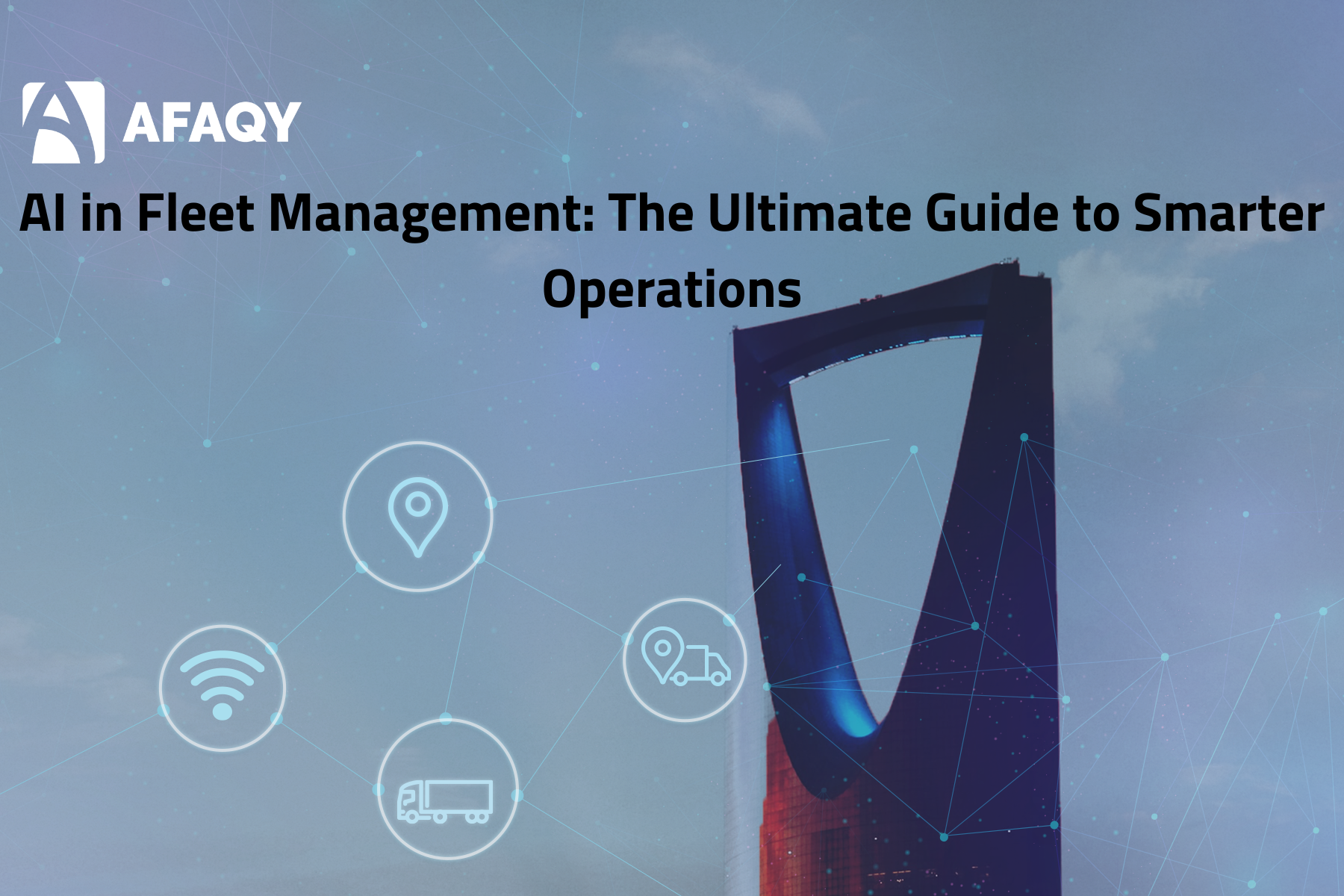The Role of IoT in Enhancing Cold Chain Logistics in Saudi Arabia

The Role of IoT in Enhancing Cold Chain Logistics in Saudi Arabia
How to manage cold chain logistics effectively in Saudi Arabia? With the country’s sweltering climate, maintaining the safety and quality of temperature-sensitive goods such as pharmaceuticals, food, and vaccines is more than a logistical challenge, it’s a high-stakes race against time.
One delay, one equipment failure, or a brief lapse in monitoring can compromise entire shipments. For logistics companies, the margin for error is razor thin, and the consequences are costly.
This pressure isn’t unique to the region. Globally, the cold chain packaging market is expected to surge from $29.1 billion in 2025 to $50.5 billion by 2035, growing at a CAGR of 5.7%.
That growth reflects more than just demand, it signals the increasing reliance on smarter, tech-driven systems to manage risk and maintain control over sensitive cargo.
Here comes the importance of IoT cold chain solutions in improving cold chain monitoring. From real-time temperature tracking to predictive maintenance and instant alerts, connected sensors give logistics providers something they’ve long needed: visibility, control, and peace of mind.
For companies in Saudi Arabia, where extreme heat and vast distances pose daily threats, IoT is becoming the backbone of a smarter, safer cold chain.
In this blog post, I will shine a spotlight on the significance of using IoT cold chain solutions and their role in enhancing cold chain compliance in KSA.
Let’s dig deeper!
Table of Contents
· What Is Cold Chain Logistics?
· The Challenges Faced in Cold Chain Logistics in Saudi Arabia
· How IoT Real-time Cold Chain Tracking is the Ultimate Solution
· Why Choose Senseware from AFAQY?
What Is Cold Chain Logistics?
.png)
Cold chain logistics refers to temperature-controlled supply chain management. The process involves following several strategies and using specific equipment to ensure that perishable goods such as food ,medications, and chemicals are stored and transported safely while maintaining a consistent temperature.
An effective cold chain logistics management should involve risk management strategies to avoid spoilage or degradation. This ensures that transported or stored temperature-sensitive products maintain their quality and safety, extending their shelf life and boosting profitability.
Let’s have a look at some of the key aspects of cold chain logistics:
· Temperature Control: Perishable goods require special storing techniques that include freezing and refrigeration to eliminate spoilage and preserve them in the required temperature.
· Specialized Equipment: Refrigerated trucks, storage facilities, and packaging materials are often used by cold chain companies to keep perishable goods in specific temperature conditions.
· Advanced Technologies: As technology evolves, so does the cold chain logistics landscape. New solutions have been introduced that involve specific temperature sensors to provide instant alerts once any risks emerge. This enhances proactive decision-making and helps cold chain managers avoid damage or spoilage.
· Risk Management: An efficient cold chain process cannot be without strategic risk management. The ability to manage any possible risks such as changes in the temperature, equipment failures, or logistical problems is essential to avoid loss and guarantee that you adhere to the cold chain quality assurance standards.
The Challenges Faced in Cold Chain Logistics in Saudi Arabia
The cold chain logistics industry is one of the most sensitive and complex industries that requires an eagle eye to keep temperature-sensitive goods in perfect conditions and ensure compliance while aligning with Saudi Vision 2030’s goals for a world-class, compliant logistics industry.
Despite the emergence of new techniques that help in deterring any risks of damage or waste, many companies may fall short in adhering to the predetermined safety standards and regulations of cold chain management.
Saudi Arabia has recently witnessed a remarkable rise in cold chain market, which generated a revenue of USD 3,918.6 million in 2024 and is predicted to surpass USD 24,834.3 million by 2033.
This was driven by the high demand for temperature-sensitive products, and, consequently, a lot of challenges are encountered in this field, especially with the country’s hot weather and the need to transport goods for long distances. Let’s highlight some of them:
Extreme Climate Conditions
High ambient temperatures, especially in summer (often exceeding 45°C), create a constant threat to maintaining required temperature ranges. Thus, cold chain systems must be robust enough to handle long periods of extreme heat, even during brief handling or loading windows.
This is only achievable through the use of IoT technology that employs cutting-edge temperature sensors that send alerts in case of any threats.
Long-Distance Transport Across Vast Areas
Saudi Arabia's geography includes remote regions and long distances between cities, which makes transport time-consuming and resource intensive. Maintaining consistent temperature control during cross-country transport is complex, especially in areas with limited infrastructure.
This also necessitates the importance of IoT in transportation that includes sensors and cameras that monitor the environmental conditions of perishable goods during transportation.
High Operational Costs
Maintaining cold chain logistics in Saudi Arabia is expensive, especially given the harsh climate and long transport routes. Businesses must invest heavily in refrigerated vehicles, storage, monitoring systems, and backup power. These costs can be overwhelming for smaller operators.
On top of that, high energy use and ongoing maintenance add to the financial strain, making it challenging to scale while maintaining compliance and product integrity.
Cold Storage Compliance in Saudi Arabia
Adhering to evolving cold chain compliance regulations, especially for pharmaceuticals and food products requires constant updates to processes and systems.
International standards like WHO’s standards for packaging of vaccines and IATA’s guidelines on shipping sensitive products are increasingly being enforced, adding complexity for local operators.
Therefore, investment in ground-breaking IoT technologies that can help you keep products in good quality and conditions can be a key to efficient cold chain processes.
How IoT Real-time Cold Chain Tracking is the Ultimate Solution
.jpg)
IoT real-time tracking and monitoring of temperature-sensitive products brings out profitable benefits for cold chain operations.
The following are some of the ways IoT enhances cold chain:
Real-time Temperature Monitoring
IoT sensors placed in transport vehicles, warehouses, and containers continuously monitor temperature and humidity.
Data is transmitted in real-time to cloud platforms or dashboards. Moreover, alerts are triggered instantly if temperature deviates from the acceptable range.
This helps you take immediate corrective action to reduce spoilage, ensure product quality, and maintain regulatory compliance (e.g., FDA, WHO guidelines).
Location & Movement Tracking
IoT devices equipped with fleet telematics for refrigerated trucks provide real-time tracking of the location and movement of cold chain shipments. This allows companies to monitor where their goods are at any moment during transit.
When combined with route optimization tools and traffic data, it also helps in identifying delays and rerouting shipments if necessary.
By knowing exactly when and where a shipment will arrive, logistics managers can better coordinate delivery schedules, reduce transit times, and ensure timely deliveries.
This visibility is particularly important for time-sensitive and temperature-sensitive goods that could be compromised by unexpected delays.
Predictive Maintenance & Equipment Health
IoT plays a crucial role in maintaining the health of refrigeration equipment used in the cold chain. Sensors installed on cold storage units, truck refrigeration systems, and freezers collect data on factors such as compressor performance, vibration, energy use, and door opening frequency.
This data is analyzed to detect patterns that might indicate a potential failure. By using predictive maintenance, companies can schedule repairs or maintenance before a breakdown occurs, avoiding disruptions in the cold chain.
This proactive approach reduces the risk of temperature excursions and product loss, while also lowering maintenance costs in the long run.
Security and Tamper Detection
IoT technology can also enhance the security of cold chain shipments. Devices can detect tampering, unauthorized access, or route deviations using sensors and geofencing features.
If a shipment goes off course or is accessed unexpectedly, the system sends alerts in real time, allowing for quick intervention. This is particularly valuable for high-value or sensitive cargo such as pharmaceuticals, biotech materials, or luxury food products.
Automation and Remote Control
IoT-enabled systems offer automation capabilities that enhance responsiveness and supply chain transparency. For instance, refrigeration systems can automatically adjust temperature settings based on sensor data or switch to backup power if a primary system fails.
You can also remotely control settings via mobile or desktop platforms, making it possible to respond instantly to changes in conditions without being physically present.
Why Choose Senseware From AFAQY?
As the demand for precise, real-time monitoring in the cold chain logistics sector continues to rise in Saudi Arabia, AFAQY has stepped up with a cutting-edge solution tailored specifically to meet the industry's toughest challenges.
Senseware is designed to safeguard perishable goods throughout the supply chain. It empowers companies with real-time data, alerts, and analytics, making cold chain operations smarter and more secure.
Here’s how Senseware can help:
· Real-Time Temperature and Humidity Monitoring: Keep track of environmental conditions inside storage units and vehicles in real-time to ensure compliance and product safety.
· Instant Temperature Breaches Alerts & Notifications: Get notified immediately via SMS, email, or app alerts when temperature thresholds are breached, allowing for quick corrective action.
· GPS Location Tracking: Integrated GPS ensures you always know the exact location of your goods, enhancing route optimization and security.
· Data Logging & Reporting: Automatically store historical temperature and humidity data for audits, compliance, and performance analysis.
· Cloud-Based Dashboard: Access all your data and insights from any device with a secure, user-friendly online platform.
· Multi-Sensor Integration: Supports various sensor types to monitor different environmental parameters tailored to specific goods or use cases.
· Customizable Thresholds: Set and adjust environmental parameters based on cargo requirements or regulatory standards.
Whether you're transporting pharmaceuticals, fresh produce, or temperature-sensitive chemicals, Senseware helps ensure that every link in your cold chain remains intact.
Get in touch with AFAQY today and discover how Sense-Ware can protect your assets and boost your efficiency!
FAQs
How to monitor cold chain logistics in Saudi Arabia?
Cold chain logistics in Saudi Arabia can be effectively monitored using IoT-based systems like AFAQY’s Senseware. These solutions provide real-time tracking of temperature, humidity, and vehicle location, ensuring that goods are stored and transported under optimal conditions despite the region’s extreme climate.
How does IoT ensure cold chain compliance in KSA?
IoT ensures cold chain compliance by continuously collecting and transmitting environmental data from sensors installed in storage units and vehicles. This data is compared against pre-set thresholds to trigger instant alerts in case of deviations.
With automated record keeping and remote monitoring, companies can meet regulatory requirements and quality standards with minimal manual effort.
What Are the Benefits of smart sensors in cold chain logistics?
Smart sensors bring precision and efficiency to cold chain logistics. They provide real-time temperature and humidity data, reduce human error, and enable early intervention in case of equipment failure or environmental risk.
Their data logs also support traceability and compliance, helping businesses avoid losses and maintain product quality throughout the supply chain.
How to avoid spoilage in refrigerated fleets?
To avoid spoilage during refrigerated fleet management, it's essential to use smart cold chain monitoring systems like Senseware besides following these steps:
· Set automated alerts for threshold breaches
· Perform regular maintenance on refrigeration units
· Train drivers to respond to alerts and handle emergencies
· Monitor routes and avoid delays that expose cargo to heat
· Keep doors closed as much as possible during transit
· Review sensor data regularly for early signs of equipment failure
References
1. Revolutionizing Cold Chain Logistics with IOT Monitoring. (n.d.). https://worldbigroup.com/Event-blogs/IOT-monitoring
2. Izikki, K., El Alami, J., Hlyal, M., LASTIMI Laboratory, University Med V in Rabat, CELOG, ESITH, & Center of Excellence in Logistics (CELOG). (2021). The use of the internet of things in the cold chain logistics for a better vaccine transportation: a state of the art [Journal-article]. https://www.dpublication.com/wp-content/uploads/2021/05/04-3004.pdf
3. Tang,Y. M., Chau, K. Y., Kuo, W. T., & Liu, X. X. (2023). IoT-Based InformationSystem on Cold-Chain Logistics Service Quality (ICCLSQ) Management in Logistics4.0. Information Systems Frontiers, 26(2), 689–708.https://doi.org/10.1007/s10796-023-10393-7



































.png)

.png)

